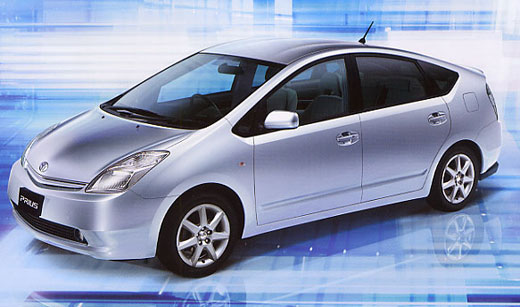Regular readers will know of my admiration for the Toyota Prius.
That’s not just because I own a first series NHW10 model (currently off the road with a worn-out high voltage battery) but primarily because of the commercial success the Prius has had.
Simply put, in terms of actual impact on the market, the Prius stands head and shoulders above any ‘alternative’ car that has been sold in perhaps the last 75 years.
 It therefore behoves anyone enthusing an alternative automotive technology – whether that’s biodiesel, LPG, pure electric cars or anything else – to know the Prius inside-out. To know its equipment level, its warranty, its real-world fuel economy, its emissions performance, its new and used prices, and its technology.
It therefore behoves anyone enthusing an alternative automotive technology – whether that’s biodiesel, LPG, pure electric cars or anything else – to know the Prius inside-out. To know its equipment level, its warranty, its real-world fuel economy, its emissions performance, its new and used prices, and its technology.
Like it or not, the Prius sets the current benchmark.
Nope, not necessarily in any one specific area – emissions, fuel economy, driveline technology, control electronics or even high voltage battery technology – but in a total package that has been successfully sold to the public for a decade.
And, because of that timescale, it is a car that is now available very cheaply second-hand.
That might all seem obvious – but it is certainly not to some.
I recently had long phone discussions with a man very enthusiastic about DIY biodiesel. He runs seminars on the topic, played an instrumental part in developing a home biodiesel plant, and is highly educated. But his knowledge of the Prius (and other hybrids) is poor indeed.
With regard to hybrids, his website contains errors of fact and makes some statements that could only be described as wild scaremongering.

 Julian Edgar, 50, has been writing about car modification and automotive technology for nearly 25 years. He has owned cars with two, three, four, five, six and eight cylinders; single turbo, twin turbo, supercharged, diesel and hybrid electric drivelines. He lists his transport interests as turbocharging, aerodynamics, suspension design and human-powered vehicles.
Julian Edgar, 50, has been writing about car modification and automotive technology for nearly 25 years. He has owned cars with two, three, four, five, six and eight cylinders; single turbo, twin turbo, supercharged, diesel and hybrid electric drivelines. He lists his transport interests as turbocharging, aerodynamics, suspension design and human-powered vehicles.






